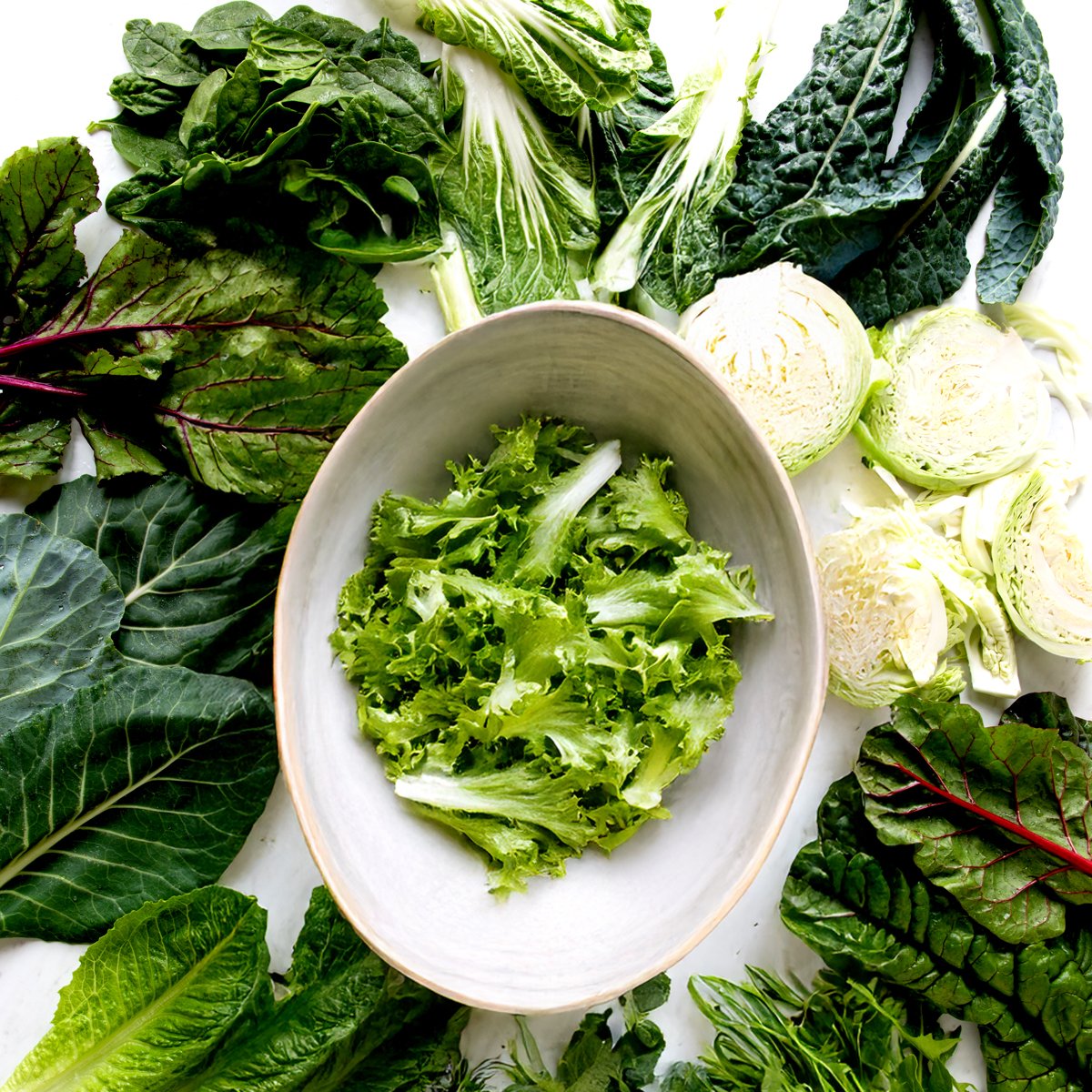
This post may contain affiliate links, meaning I can earn a small commission from items you purchase (at no cost to you).
Table of contents
Step aside salad. You’re no longer the only way to get leafy green vegetables into our diet. The following nutritional powerhouses deserve a starring role in any kitchen— not just for a trained chef. Packed with vitamins, minerals, and antioxidants, leafy greens offer a wealth of health benefits and surprising versatility in the kitchen.
I started my love affair of leafy greens with blending baby spinach into my smoothies. Over time, I started to crave more leafy green vegetables. From vibrant stir-fries to hearty plant-based soups and even delicious green smoothies, it’s time to look beyond the bowl and discover the exciting world of cooking and blending with leafy greens.

Health Benefits of Leafy Green Vegetables
Leafy greens are super important for a healthy diet. They’re nutrient-dense, green veggies that provide tons of vitamins and minerals. According to a report in the journal Neurology, a daily serving of leafy greens can lead to slower age-related cognitive decline. The term “leafy greens” encompasses a wide array of edible leaves, each with its unique flavor profile and texture. Getting familiar with the leafy green varieties is the first step to unlocking their culinary potential.
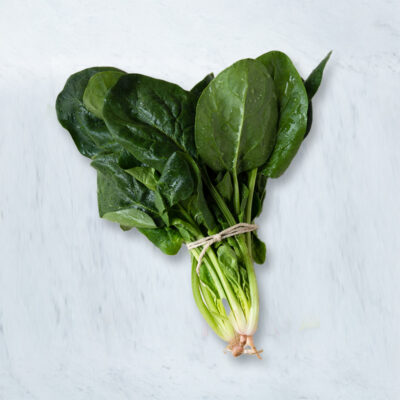
Spinach
Mild & slightly sweet
Spinach is a nutritional powerhouse, packed with vital vitamins (K, A, C), folate, and iron, crucial for bone health, vision, immunity, cell growth, and red blood cell production. Its high antioxidant content and plant compounds may also lower the risk of chronic diseases, making it a valuable addition to a healthy diet.
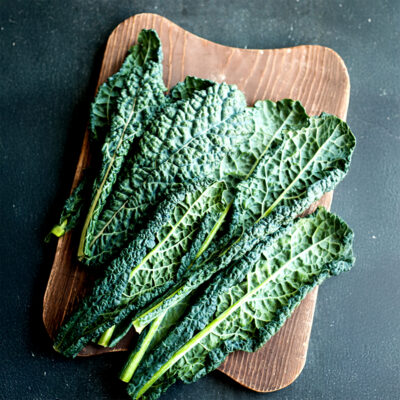
Kale
Hearty & slightly bitter
Kale has different varieties like curly kale, Lacinato (dinosaur) kale, and baby kale offer varying textures. With 684% of the recommended daily value of vitamin K, 206% of the RDV of vitamin A and 134% of the RDV of vitamin C, this dark leafy green packs a health punch.

Lettuce (Romaine, Butter, Iceberg)
Mild & slightly sweet
Primarily used raw for salads and wraps, some firmer varieties like romaine can be lightly grilled or braised. Romaine lettuce is high in fiber and low in calories. The vitamin C and beta-carotene content help to lower cholesterol and prevent build-up on artery walls, which reduces the risk of a heart attack.

Arugula (Rocket)
Peppery & slightly bitter
Arugula adds a zesty kick to salads and cooked dishes. More than just a garnish, one cup of this leafy green contains 27.7% of the RDV of vitamin K. Tastes best on top of pizza, in a salad or sandwich. I don’t recommend making smoothies with it.
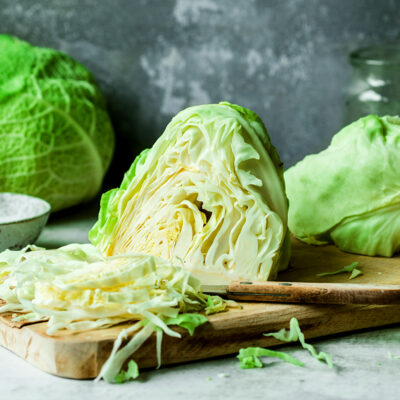
Cabbage
Hearty & pungent
This leafy green can actually be purple, red, white or green, but is definitely still considered a leafy green. I love using cabbage as a plant-based taco shell, blended in a cabbage smoothie or roasted cabbage with light seasoning. Loaded with fiber, folate, vitamin B6 and antioxidants which help fight inflammation.
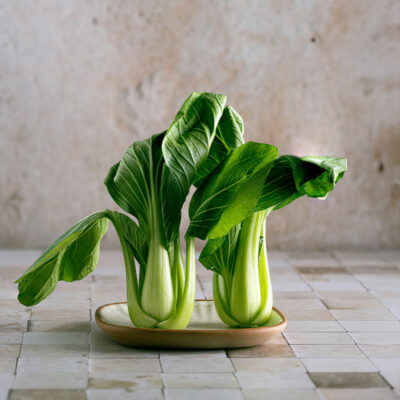
Bok Choy
Mild & slightly sweet
Bok choy is excellent stir-fried, steamed, or added to soups. Full of vitamins A and C, bok choy ranks high for nutrient density as well. All parts of the plant can be used: shredded in a salad, my vegetarian ramen, cooked in soup or blended in a smoothie.

Carrot Greens
Herbaceous & slightly bitter
Carrot tops offer surprising nutrition, providing vitamin K for blood clotting and bones, vitamin C for immunity, and potassium for blood pressure regulation. Their phytonutrients also offer potential anti-inflammatory and antioxidant benefits, making them a worthwhile to smoothies or even pesto!
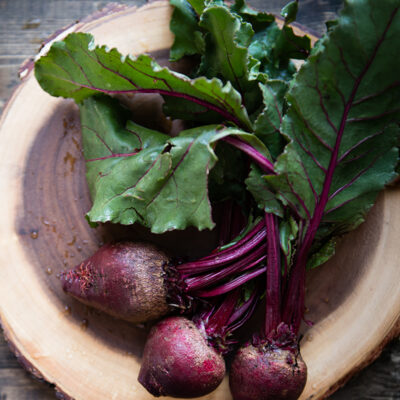
Beet Greens
Slightly earthy
Beet tops are a nutritious leafy green, rich in vitamins K and A, vital for blood clotting, bone health, vision, and immunity. High in phytonutrients, including betalains, beet greens have anti-inflammatory benefits. When blending smoothies with beets, wash and blend in the beet greens.

Collard Greens
Tough & slightly bitter
Collard greens benefit from long cooking times. Like their other cruciferous family members, collard greens are great cancer fighters. They are also pretty good at helping your body digest foods properly with all the fiber inside. They are most popular steamed, but adding them raw to your smoothies will provide greater health benefits.
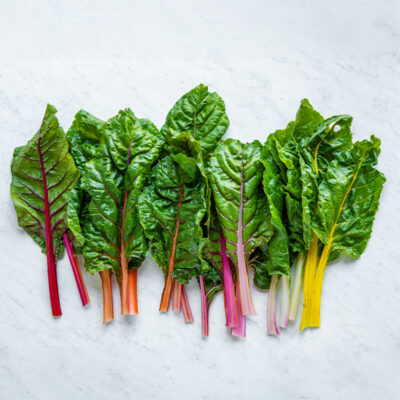
Swiss Chard
Mild & slightly earthy
Mild and slightly earthy with colorful stems that are also edible, Swiss chard is a beautiful and nutritious addition to many dishes. Chard is a colorful, dark leaf known for its ability to regulate the body’s blood sugar. Translation? If diabetes or maintaining blood sugar levels is a concern, add this veggie to your regular rotation.
Leafy Greens Recipes
5 Ways to Use Leafy Greens
Ready to move beyond the traditional salad? Here are some inspiring ways to incorporate more leafy greens into your daily meals:
- Sautéed and stir-fried: Spinach, baby kale, and Swiss chard wilt beautifully in a hot pan with a little olive oil, garlic, and a pinch of salt and pepper. A squeeze of lemon adds brightness. Heartier greens like kale, mustard greens, and bok choy hold up well in stir-fries. Add them towards the end of cooking to maintain some texture and vibrant color. Pair them with your favorite proteins, vegetables, and sauces.
- Soups for warmth and nutrition: Stir in chopped spinach, kale, or Swiss chard during the last few minutes of cooking vegetable soup recipes. They will wilt down and add a boost of nutrients and a touch of freshness. Blend cooked greens like spinach or kale with broth, sautéed onions, and a touch of cream or coconut milk for a smooth and nutritious soup.
- Baked delights with a green twist: Incorporate chopped leafy greens into egg-based dishes like quiches and frittatas. They add color, flavor, and valuable nutrients. Layer sautéed greens into pasta bakes and lasagnas for an extra dose of vegetables. They blend seamlessly with the other ingredients. Add finely chopped cooked greens to roasted root vegetables, or use them as a filling for savory pastries and dumplings.
- Blended goodness in smoothies: Don’t be afraid to toss a handful of spinach or kale into your breakfast smoothie. The flavor is surprisingly mild when combined with fruits, yogurt, and other ingredients.
- Creative raw preparations: While not technically a recipe, juicing leafy greens is a great way to consume a concentrated amount of nutrients. Blend arugula, spinach, or kale with nuts, garlic, olive oil, and lemon juice for a vibrant and flavorful pesto. You can also layer large lettuce leaves like romaine or butter lettuce to create healthy and delicious lettuce wraps and sandwiches.
Benefits of Rotating Leafy Greens
I often talk about rotating your greens when making green smoothies. This is because leafy greens come from all different plant families, each offering different health benefits. Yet if spinach is your jam, no worries! Keep doing that. You can always have a salad with kale or make a soup with Swiss chard.
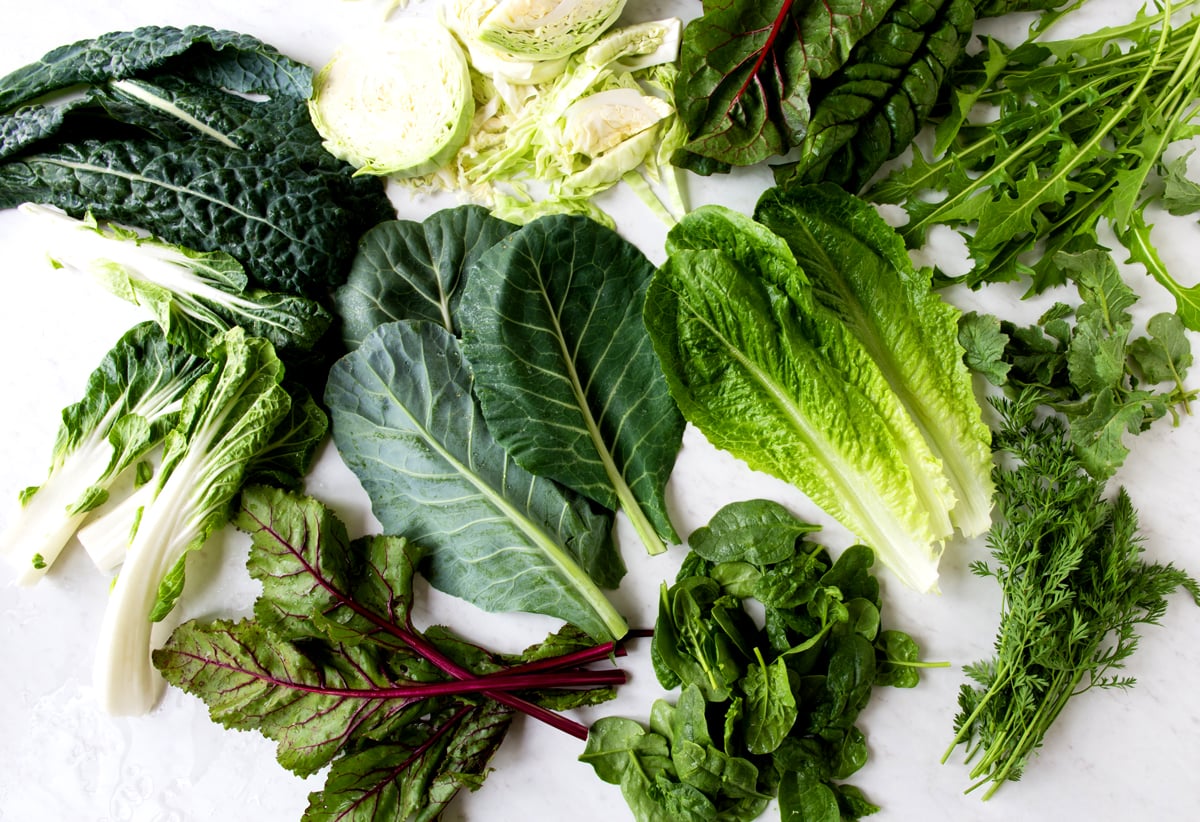
Tips for Cooking with Leafy Green Vegetables
Leafy greens are more than just a salad component. Their versatility and nutritional benefits make them a valuable addition to any healthy diet. By exploring different cooking methods and incorporating them into a variety of dishes, you can unlock a world of flavor and boost your well-being. So, step away from the salad bowl and embrace the green revolution in your kitchen!
- Experiment! Don’t be afraid to try different combinations and cooking methods to discover your favorite ways to enjoy leafy greens.
- Wash thoroughly: Always wash leafy greens thoroughly under cold running water to remove any dirt or grit. A salad spinner can be helpful for drying them.
- Remove tough stems: For heartier greens like kale and collards, remove the tough central stems before cooking.
- Don’t overcook: Most leafy greens cook quickly. Overcooking can make them mushy and reduce their nutritional value.
- Balance flavors: The bitterness of some greens can be balanced with acidic ingredients like lemon juice or vinegar, or by pairing them with sweeter or richer flavors.
What are your favorite leafy greens? Drop a comment below and let me know if this list has inspired you to try a new ingredient, or if you’ve got a new green for me to try!
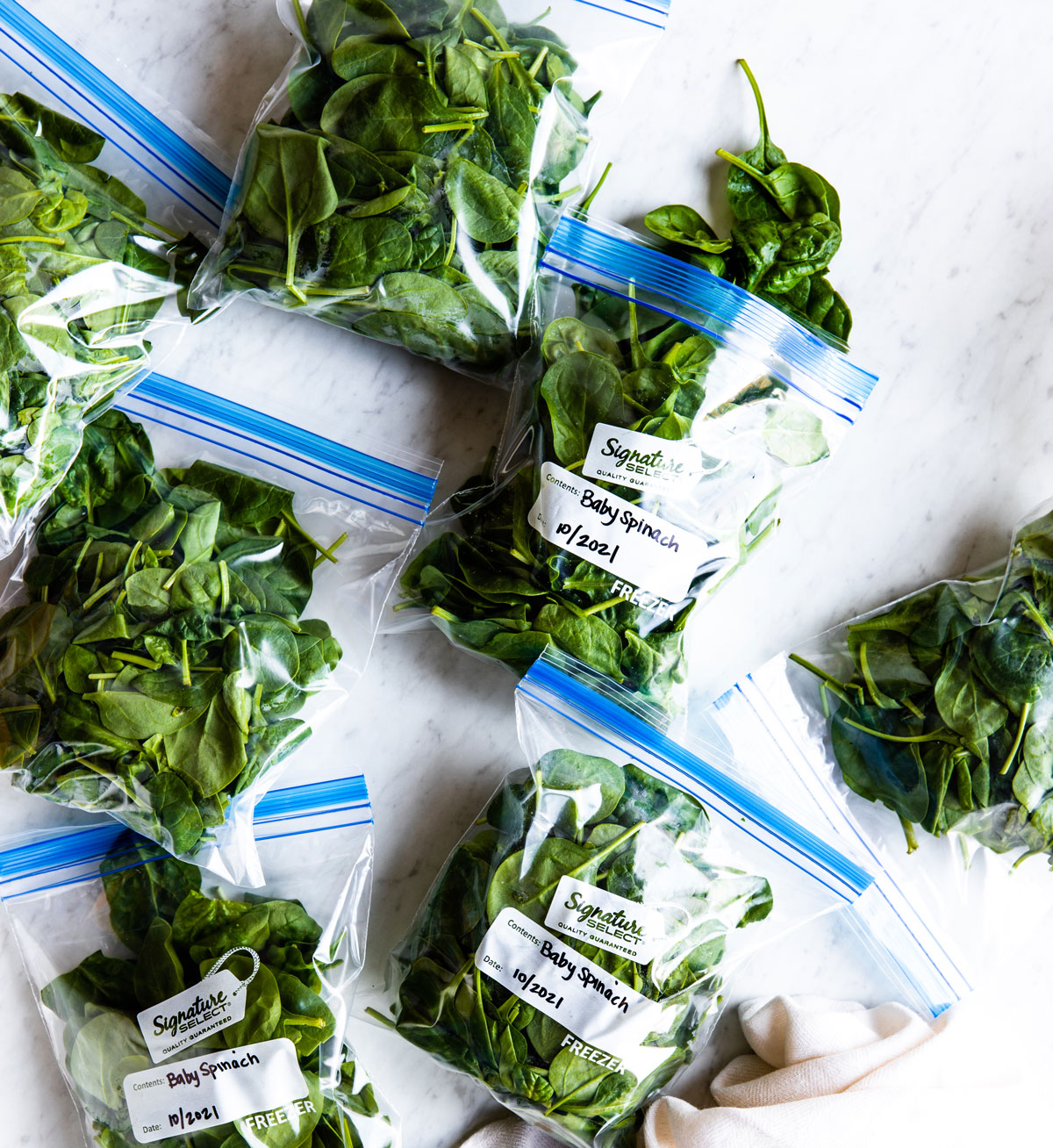
Freezing Your Leafy Greens
Ever wonder how to use up all the beautiful leafy greens you just bought, before they start to wilt? Even though I make green smoothies daily, I sometimes need to freeze my spinach or kale to stay fresh longer.
To lengthen the shelf life of leafy greens and make rotating your greens as easy as opening your freezer, try freezing your spinach. I buy spinach and power greens at Costco— freezing half of it maximizes the freshness.
Common Questions
You’ve probably heard of spinach, kale and lettuce, but leafy greens also include carrot tops, beet greens, swiss chard, arugula and more! They can grow all on their own, or be found on the tops of other plants (like broccoli, beets and carrots).
All leafy greens are incredibly nutritious and great to mix into your diet. Kale and spinach are probably the most nutrient-dense, yet you need a variety of greens (and other fruits and vegetables) for the best health. Don’t be afraid to give a new one a try next time you’re at the store. You might be surprised by mustard greens, bok choy and more!
Greens don’t just take place in salads or garnishes for burgers. You can use them in green smoothies, all kinds of pesto, filling for stuffed mushrooms or potatoes. Pretty much anything you want! Next time you are grocery shopping, grab a new-to-you leafy green and get adventurous with how you prepare it.





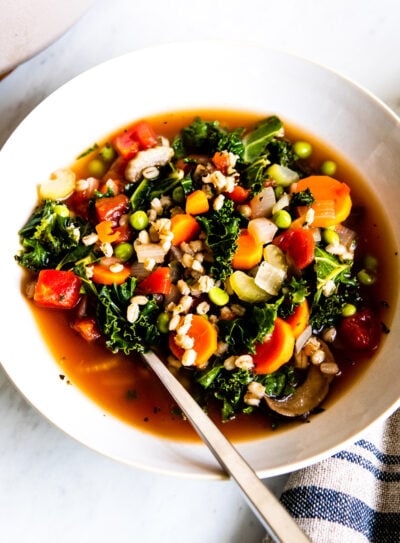

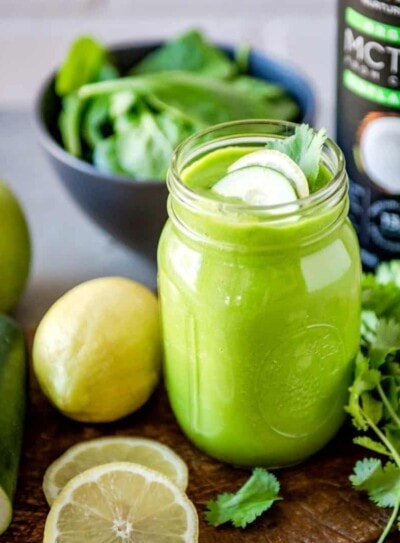
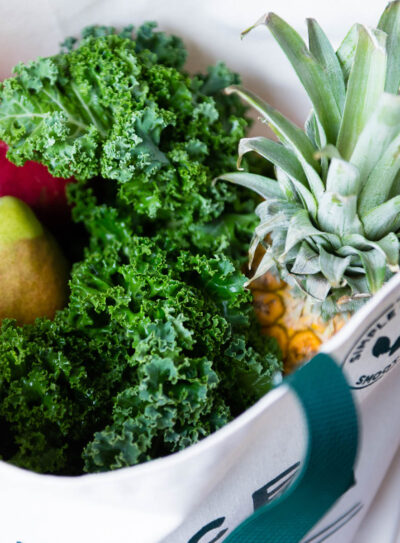


I wash all my fruits and veg in vinegar to get rid of toxins.. is this ok?
Hi Beverly,
Washing your greens with vinegar and water is a great way to remove bacteria and pesticides from your leafy greens. But it’s still important to rotate your greens, to prevent toxin build-up from the natural toxins that occur within the plant.
I tried carrot tops, say with pears and some apple juice, but they do not mix well when I put everything together in the blender. Do you have any tip for these tops?
Thank you!
Hi Mum 3.0,
Have you tried blending the carrot tops + liquid base first? Then add your remaining ingredients. Check out blending your green smoothie without any leafy chunks here!
https://simplegreensmoothies.com/smoothie-formula
1. What are ur thoughts about using green powder product instead of raw greens if no access to fresh produce?
2. What’s the 411 re spinach not allowing body to absorb calcium? I want to increase calcium intake to build bone density & not sure if spinach should be eaten separately from calcium-rich foods or if that’s false. Thx!
Hi Jana,
Personally, we’re all about fresh leafy greens. But when raw greens aren’t accessible, green powder is a great option! Worried about spinach preventing calcium absorption? While oxalates prevent calcium absorption from spinach, we reach for plant-based options like broccoli, okra, + almonds.
If all leafy greens have a small amount of toxins, how does rotating help? It seems that Oxalate build-up would still occur unless you completely refrain from leafy veggies for a few days or week. Someone previously ask if cooking the veggies helps reduce or prevent toxin build-up, but the question wasn’t really answered. Instead, rotating veggies was again recommended. Months ago Dr. Oz recommended only consuming raw leafy green veggies 2-3 times a week. He advised to cook veggies slightly beforehand if you consume daily. Have you researched this option? If so, do you feel there is significant nutrient lost if you lightly steam veggies? Thanks!
Hi Nd,
Great questions! The leafy greens in each family have similar “DNA,” each including their own minor level of toxins. By rotating family types of leafy greens you’re not only preventing a toxic build-up, you are also feeding your body a variety of nutrients. Therefore it’s not necessary to take a break from leafy greens, but simply rotate between greens.
We prefer to get our veggies raw to obtain the maximum nutrients and they make our smoothies super yummy. But if you want to cook your greens before blending to help further prevent toxin build-up, a light steam will help!
Hope this helps!
How much spinach or Kale should I add to smoothie? 1-2 cups of spinach? Is that too much?
That’s perfect! We recommend 1 cup leafy greens for 1 serving of smoothie— and our recipes typically make 2 servings (so we say 2 cups leafy greens). Make sure to check out our recipes section where you’ll find a bunch of recipes to get you started!
I have been doing green smoothies for almost 4 years now. These are amazing things I drink a quart in the morning and a quart in the evening. Same thing every day. Spinach, Kale, chard, flax seeds, sun flower seeds, chia seeds, avocado, and tofu. I can’t eat sugars or carbs except for what is in the nuts and seeds I eat. after reading your article I have decided to start rotating my vegetables not because of any problems from eating the same thing every day but to get the extra nutrients that this will give me.
You’re a Rawkstar, John! So glad we inspired you to rotate your veggies. Happy blending! 🙂
seems every time I make a smoothies of kale spinach and other greens I have a vertigo attack and heart starts beating
Hi Dawn,
Ek! That doesn’t sound good. And we definitely want you feeling great when enjoying your green smoothie. We suggest reaching out to your physician to ensure the leafy greens in our recipes are the right choice for you + your body.
I can’t find kale, arugula, beet greens it’s near winter here!
Can I just use a mixture of cabbage, lettuce, spinach, bok choy, cilantro and parsley as spring mix greens… also tell me the substitutes of kale… and the soy protein I got here contains sucrose, should I use it or not.
Hi Sajid,
We’re all about reaching for local leafy greens. Don’t have the greens we’ve listed above where you are? No worries! Swap in greens you love that are available where you shop! Our recipes are here to inspire you, so please don’t feel like you need to follow them to a T. We’d love to hear what you’re blending with. Reach out + let us know!!
Hi. I know that fresh is best but can I use canned fruit instead when I can’t get fresh.
Hi Wendy,
That’s a question we get a lot. You can definitely used canned fruit. But, it’s important to know that when using canned fruit, even those stored in their own juice, contain additional sugar. So reach for low-glycemic fruits like berries, apple, or peaches.
https://simplegreensmoothies.com/low-sugar-fruits
We love reaching for frozen fruit when our favorites are out of season. Or check out our Rawkstar Substitution Guide…
https://simplegreensmoothies.com/substitution-guide
I am new to this and was wondering, when switching up greens, can I go from spinach, kale and romaine lettuce? Spinach in a smoothie for breakfast, kale for lunch and the romaine lettuce at dinner? Or do I need to switch each week?
Hi Ashley,
Thanks for reaching out. We suggest switching leafy greens week to week. That way it gives your body plenty of time-off between each green.
Hope this helps! Reach out with any questions!
Hi
I’m in Australia, do you ship your books and recipe cards to Australia.
Hi Pam,
All of the products in on our website and in PDF format and emailed directly to your inbox.
You can pick up a copy of our book on The Book Depository! They offer free-shipping WORLDWIDE! And it’s currently 40% off!
Hi!
I have been drinking a green smoothie Monday to Friday for over two months now.
What I normally put in it is:
– One or One and a half hand fulls of Spinach
– One or One and a half hand fulls of Kale
– A small banana or half of a big one OR Half of a big apple
– Hand full of strawberries OR Blueberries
– Sometimes a bit of celery Or Cucumber Or half of an orange
I do this as I find the smoothie is very easy breakfast on the go, and it keeps me satisfied by at least 3 hours.
My question is…
Will I get that Alkaloid Build up if I continue doing this?
How much is too much leafy greens?
Should I rotate one day just spinach and another day just kale? Will this prevent it?
Ada S.
Thank you
Hi Ada,
Your smoothie sounds awesome! Worried about oxalate buildup? Simply switch up your leafy greens week to week. For example blend kale one week and the next week spinach, then blend kale the following week. This will give your body enough time to prevent any toxins from building up.
Hope this helps!
What are the symptoms of greens toxicity build up? I believe that’s what you called it. And is it possible to get it from the over consumption of any greens? I’m new to smoothies and looking forward to some new and awesome tasting smoothies. Also what are vegetables that can be added? Frozen carrots, peas, mushrooms? Just curious. Thanks for all your love and support!
Hi Joyce,
Thanks for reaching out. All raw leafy greens carry a small amount of toxins that protect plants from being entirely consumed by other animals—and wiping out the plant species. It’s a defensive trait, and something even we should be aware of. But if we rotate our greens we help prevent this build-up. Some symptoms of oxalate build up can be joint pain, kidney stones, or hives.
You can definitely add veggies to your green smoothies! We especially love blendin’ with root vegetables. Learn more about our favorites here…
https://simplegreensmoothies.com/fruit-and-vegetable-smoothie
Greetings!! How do I know which greens go with what fruit…like do raspberries and arugula compliment one another? How do I know which greens best suit which recipe?
Hi Shavonne,
Know what’s great about our green smoothie formula!?! The ratio of fruit to leafy greens allows you to get really creative, without being overpowered by that “green” flavor, no matter what leafy green you’re blendin’ with.
Check out our formula here…
https://simplegreensmoothies.com/how-to-make-a-smoothie
I’m new to your website. Your recipes look yummy, but I am pre-diabetic with orders to keep my smoothies low in sugar content where your recipes are high. I’ve been doing my own thing with smoothies, using only strawberries and cucumbers to enhance flavors, but honestly, the totally green flavor gets old. Is there a happy medium that would taste yummy but keep the sugars low?
Hi Nillawilla,
Thank for reaching out to us. Since we are not doctors or nutritionists, we suggest that any member of community with health concerns to speak to their healthcare provider to confirm that green smoothies and the natural sugars are okay for their eating plan. Here is a link to our favorite low sugar fruits.
https://simplegreensmoothies.com/low-sugar-fruits
Hope that helps.
I’m new to Simple Green and trying to replace all my meals with smoothies and salads to cure my diabetes and lose weight. I have plant-based protein formula and would like to know if I should be adding this to my smoothies and if so how much? Or, can I get enough protein from green leaf smoothies?
Hi John,
Looking to use your green smoothie as a meal replacement? We suggest adding protein + healthy fats to ensure you’re fueling your body with a complete meal. Learn more about adding protein + our favorite meal replacement booster combos here…
https://simplegreensmoothies.com/meal-replacement-smoothie
Also, we’re green smoothie lovers alright, but we’re not doctors or nutritionists. It’s always best to run green smoothies and our recipes past your personal physician before making changes to your diet.
Thanks for blendin’ with us!